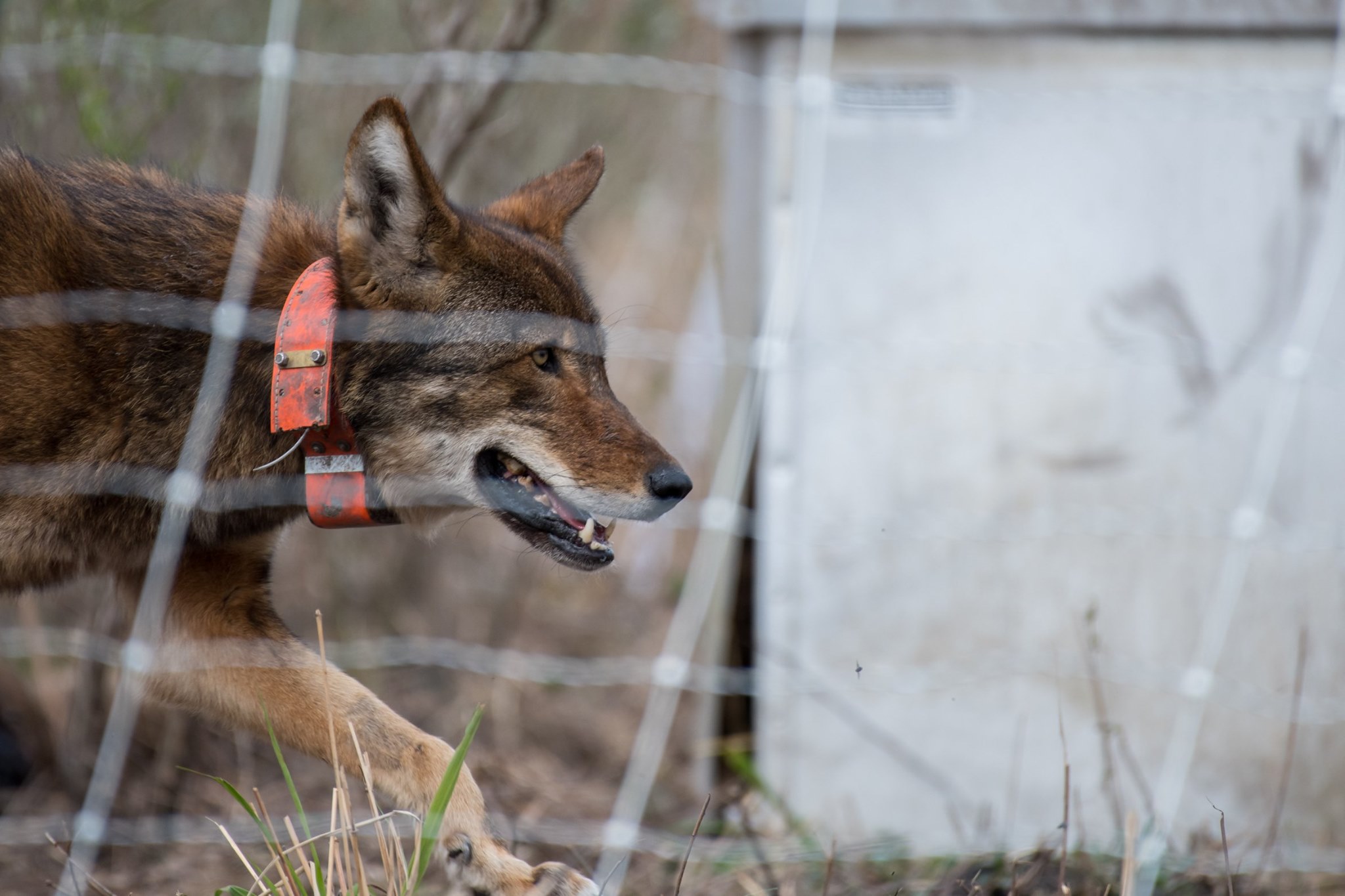
Time to make babies? A pair of red wolves, one recently moved from Florida to North Carolina and the other a resident female, have been released from their acclimation pens in hopes of creating a breeding pair.
In January, the U.S. Fish and Wildlife Service moved the juvenile red wolf by air from Florida to the Alligator River National Wildlife Refuge to try and create a new breeding pair with a resident female.
Both were held in acclimation pens, and now have been released to, hopefully, begin their lives together.
Resident breeding female from the Milltail pack being re-released on Alligator River National Wildlife Refuge. [Running Wild Media]The red wolf once roamed much of the southeastern United States, but was declared extinct in 1980, edged out by predators like gray wolves and coyotes. Fourteen remaining red wolves were captured in Texas and Louisiana before the extinction declaration and were used to establish a breeding program.
In 1987, a few mated pairs were released as an experiment in reintroduction at the Alligator River Wildlife Refuge. That experiment grew to a population of more than 100 red wolves covering five eastern North Carolina counties, including Dare and Hyde.
Male red wolf translocated from St. Vincent National Wildlife Refuge in acclimation pen, just prior to release.[Running Wild Media]But in recent years, a “vocal group of landowners pushed the government to abandon recovery efforts, arguing the animal is a coyote hybrid,” according to the Associated Press. Last year, there were no breeding pairs in North Carolina, and only about a dozen red wolves are believed to remain.
In 2015, the North Carolina Wildlife Resources Commission asked the federal government to end the red wolf conservation program and began removing some protections for the endangered canines. Last year, the federal government considered a proposal to reduce the conservation area to just Dare and Hyde counties.
This story originally appeared on OBXToday.com. Read More local stories here.





Be the first to comment